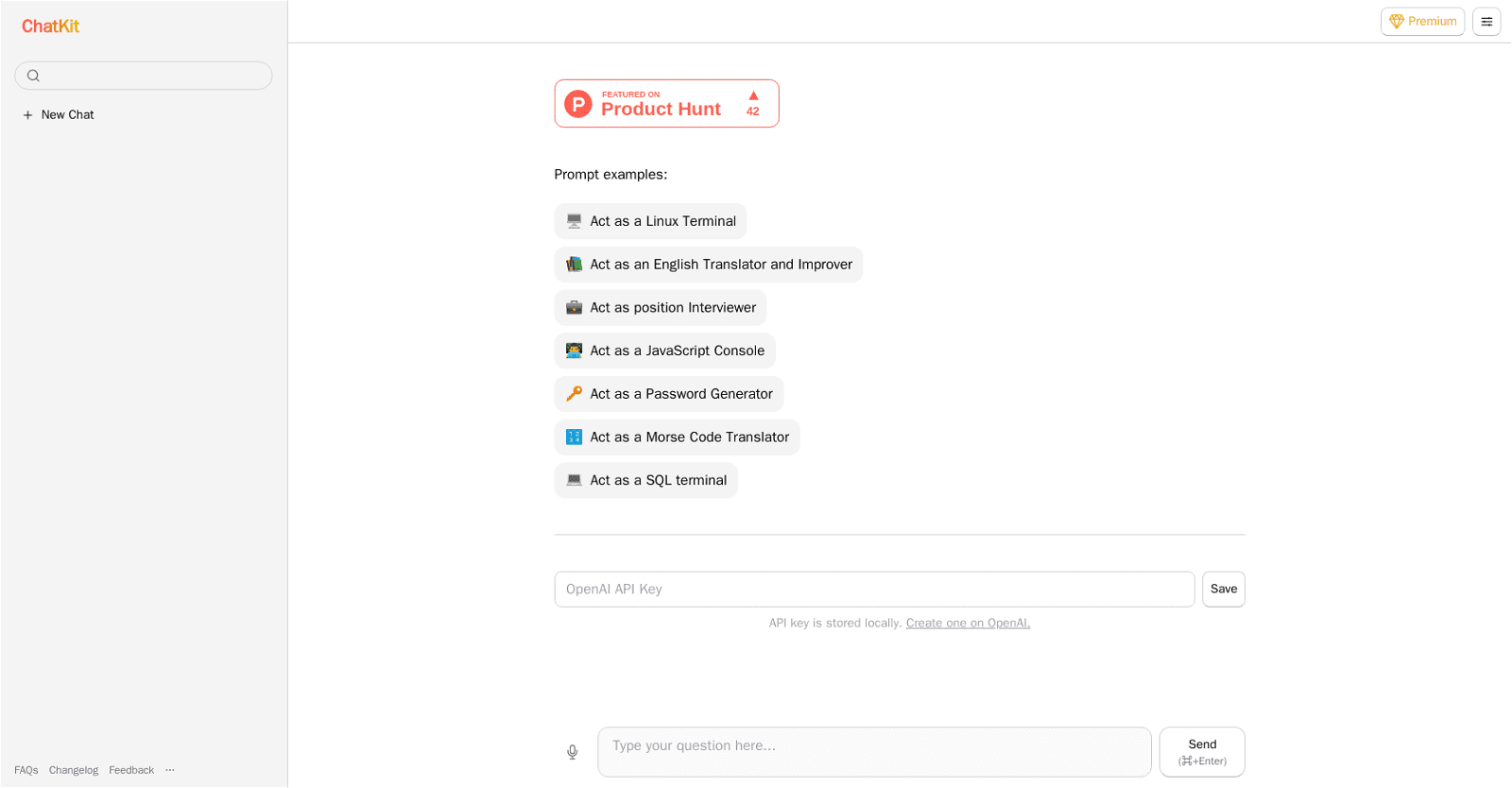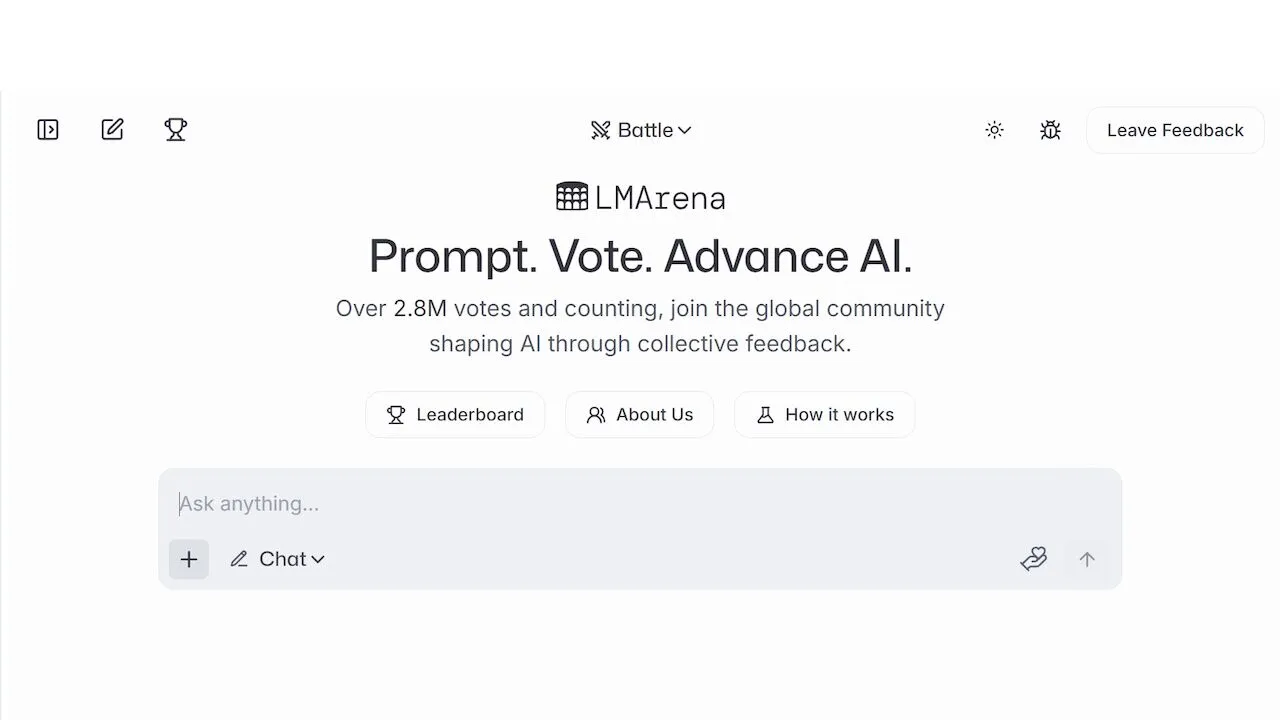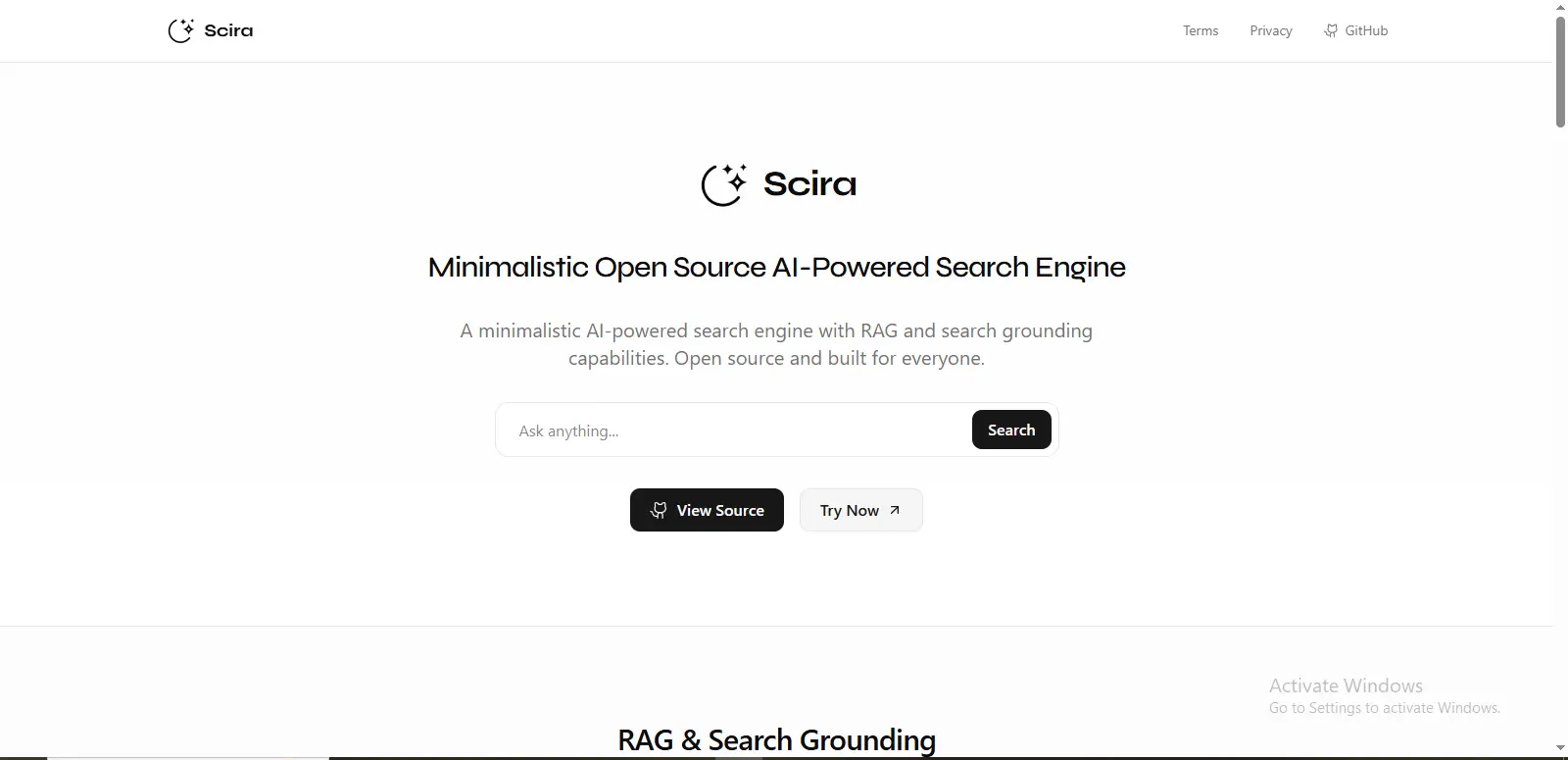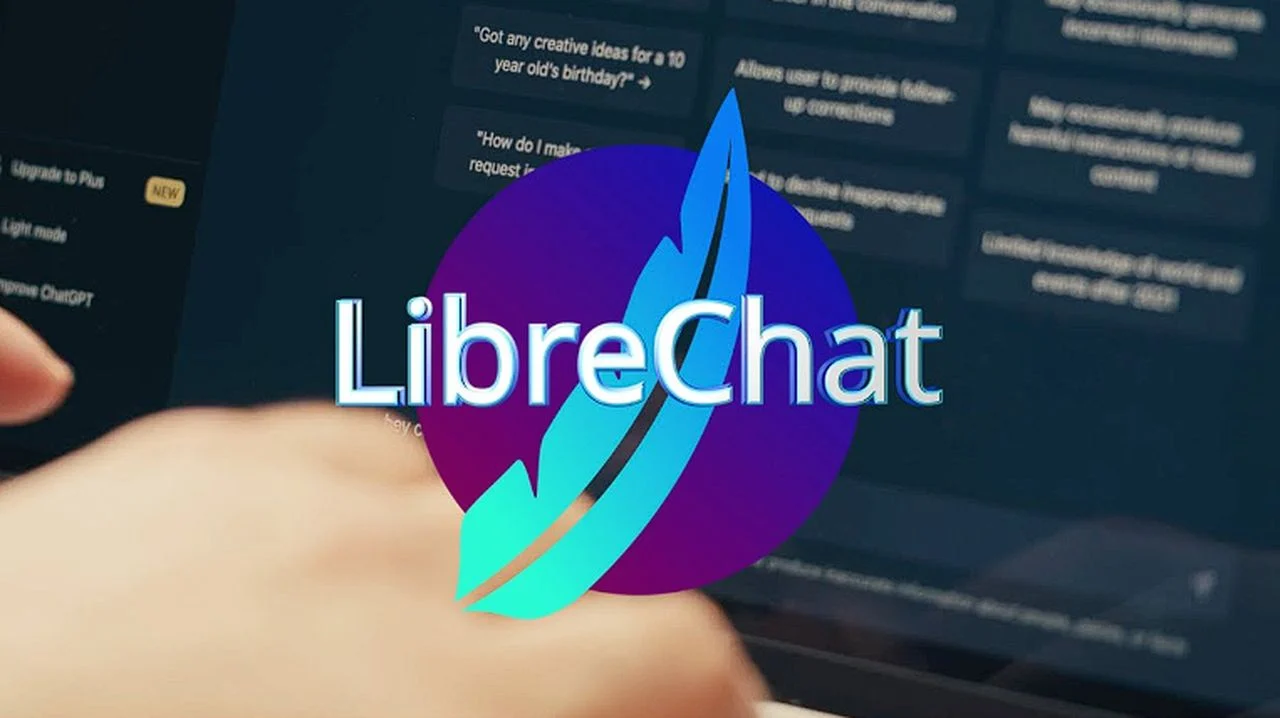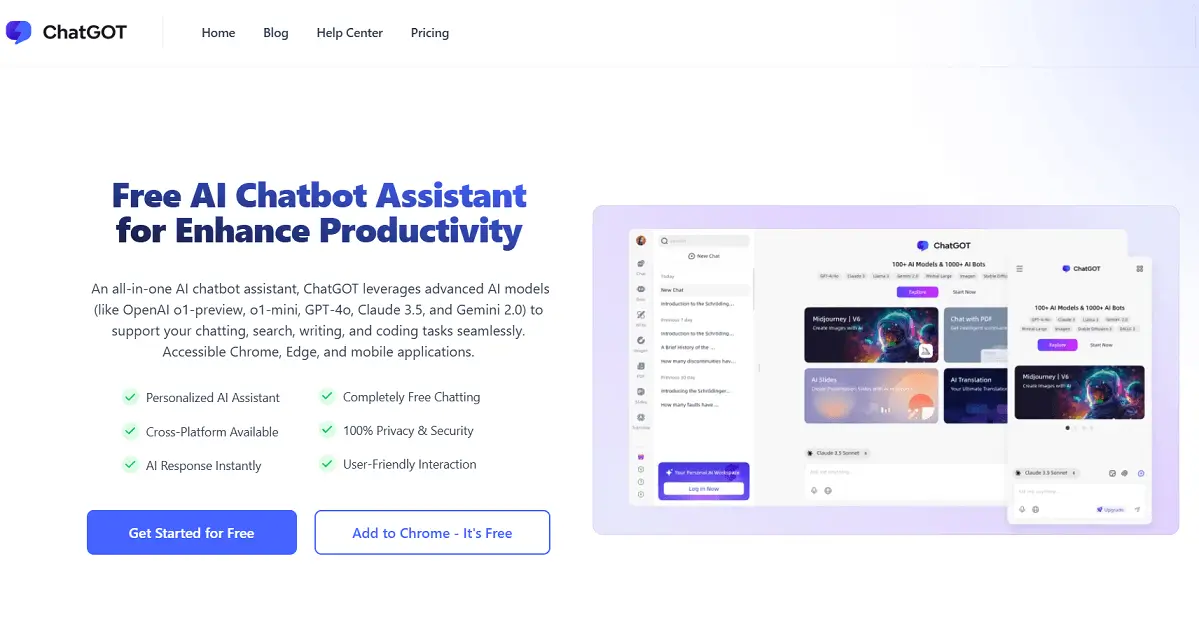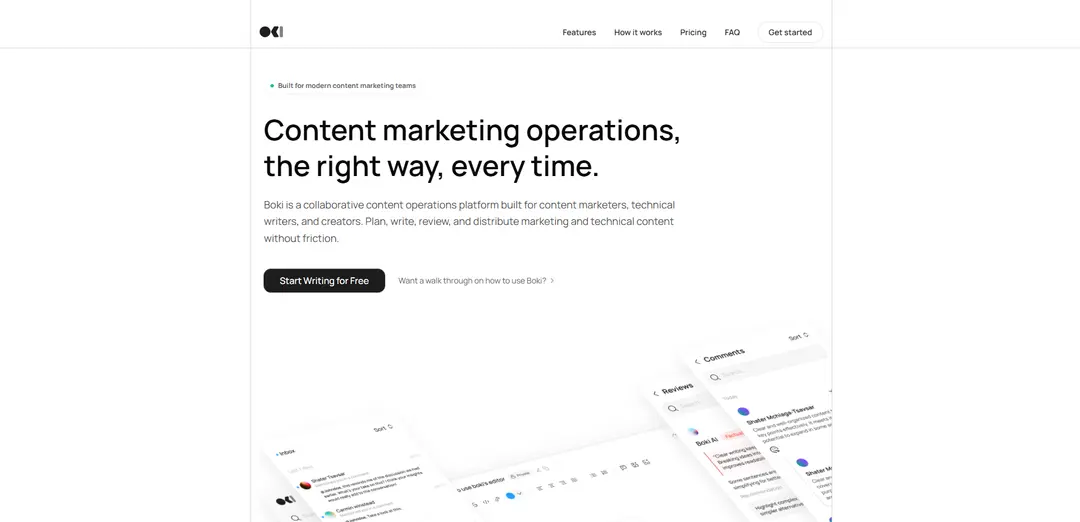ChatKit enhances the ChatGPT interface by introducing additional features that elevate the user experience. It provides a sleek and polished interface, ensuring seamless interaction with ChatGPT.
Among its enhancements, ChatKit offers a new chat feature, a FAQ section, a changelog section, and a feedback section. Additionally, users can access ChatKitPremium for more advanced functionalities.
With ChatKit, users can perform tasks such as generating passwords, translating text from English to other languages, using it as a JavaScript console, and as a SQL terminal.
A standout feature of ChatKit is its ability to store API keys locally. Users can generate API keys on OpenAI and securely save them within the ChatKit platform. This capability is particularly beneficial for developers and businesses leveraging ChatGPT to create conversational AI applications that enhance customer interactions.
More details about ChatKit
What are the prompt examples in ChatKit?
ChatKit provides various prompt examples to enhance user interaction, including acting as a Linux terminal, functioning as an English translator and improver, simulating a job interviewer, acting as a JavaScript console, generating passwords, translating Morse code, and serving as a SQL terminal.
Can ChatKit conduct job interviews through its AI?
Yes, ChatKit includes a feature where it can act as a position interviewer. While specific details about its operation aren’t disclosed, this functionality allows the AI to simulate a job interview scenario by asking relevant questions, aiding users in preparing for real-world interviews.
Can ChatKit generate passwords?
Yes, ChatKit offers the capability to generate passwords. This feature is designed to provide users with secure and randomly generated passwords when needed.
What additional features does ChatKit provide for ChatGPT?
ChatKit enriches the ChatGPT interface with several additional features, including a new chat function for improved interaction, a Frequently Asked Questions (FAQ) section for easy reference, a changelog section to track updates, and a feedback section for user input. It also supports functionalities like password generation, language translation, JavaScript console operations, and SQL terminal tasks, enhancing versatility and utility for users.
